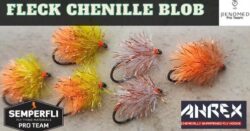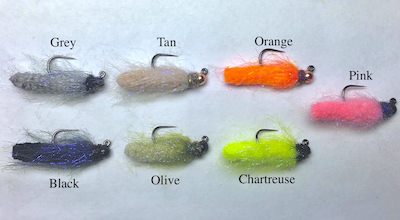 Fly tying is an art. Not everyone can paint the Mona Lisa or tie a Royal Coachman. It takes dexterity, good vision, technique, and skill. Not everyone is a master tier. Quality fly tying takes practice, patience, proper great/tools, and more practice.
Fly tying is an art. Not everyone can paint the Mona Lisa or tie a Royal Coachman. It takes dexterity, good vision, technique, and skill. Not everyone is a master tier. Quality fly tying takes practice, patience, proper great/tools, and more practice.
Fly tying is a great way to supplement your fly boxes with flies at a cheaper cost. There are still some patterns that I buy rather than tie but there are many simple patterns that are perfect for beginner tiers and catch fish just as well. Tying your own is rewarding and FUN!
Simple ties require the same vice, tools, materials, and skills. Mastering simple ties helps you to become a better fly tyer. New tiers also have the modern advantage of YouTube videos. These videos are excellent and plentiful. You can watch skilled tiers produce quality flies. Fast forward or reverse is possible just in case you miss something. For most of us, we are visual learners. Seeing is believing and these videos make learning how to tie a fly way easier.
Start tying bigger flies before getting small. Practice knots and whip finishing on bare hooks. Cheaters are perfect if you need some magnification. I also placed a white piece of tagboard behind my vice and tying station. This helps me focus on the fly. Make a vice bench and keep it organized the same way. Scissors are here, bobbins are there, etc. Be consistent.
If I had just one tying material to make a trout fly from it would be Peacock Herl. It is iridescent and reflects light. Just covering a hook with herl will catch some trout. A Brassie nymph is simply brass wire wrapped on a hook. The original Copper Johns were just copper wire wrapped on a hook. Many of these early flies didn’t even need a vice. My first San Juan Worm was just a red rubber band, from the newspaper that I knotted around and on a hook. I also used copper wire to attach a beer can zip top to a hook. I caught my limit of nice brook trout, on one opening day, using this trash fly.
Here are the first flies to tie!
Mop Fly Dust mops from the cleaning product aisle are cheap and perfect to make a fly. My favorite color is Chartreuse, but I know one guy that fishes’ lakes and prefers Blue. Trim off a lump and simply tie it on a hook.
Chenille Blob Crystal Chenille is a wonderful and flashy tying material. You just need to wrap it around a hook into a blob. It’s important to finish with a good knot. Orange, yellow, and mixed colors work well.
San Juan Worm Squirmy worms are made from Kid toy pieces. Rubber bands and special worm material will also work. Attach it to the hook and hang on.
Egg Fly Fish eat fish eggs. You can mimic them using colored glue sticks that can be attached to a hook. Chenille, yarn, and other egg materials make great looking flies. When you get proficient, try adding a yolk to your patterns. I used orange chenille for my first egg pattern, with a lead wire core.
Wooly Bugger This fly will mimic a minnow, crayfish, large nymph, or just something a fish wants to attack. Black is my go-to color, but brown is best when dead drifting as a crayfish. You can keep these flies simple or more complex. Add a bead or conehead to add weight. Buggers are just chenille, marabou, and hackle. Attaching materials and knots are the same for all flies.
Make patterns your own by adding other materials. Now is when a few wraps or herl, chenille, or hackle can kick your fly up a notch.
Winter is Tying Season!
Montana Grant




